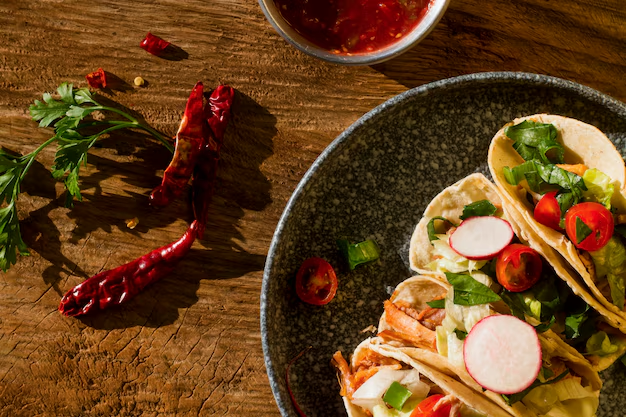Keep Your Salsa Fresh: How Long Does Homemade Salsa Last in the Refrigerator? 🌶️
Homemade salsa is a delectable addition to any meal, whether you’re enjoying it with chips, tacos, or as a zesty topping for grilled chicken. Fresh, flavorful, and versatile, it’s no wonder salsa is a staple in many kitchens. However, like all homemade food, salsa has a limited shelf life. If you’ve ever found yourself peering into the fridge, wondering if that jar of salsa is still good, you’re not alone. Understanding the storage requirements and safety guidelines for homemade salsa is crucial for avoiding food waste and ensuring safety.
Understanding the Shelf Life of Homemade Salsa
Factors Affecting Salsa Longevity
When determining how long homemade salsa stays fresh in the refrigerator, several factors come into play:
Ingredients: The type of ingredients used can greatly influence salsa’s shelf life. Acidic ingredients like tomatoes, lime juice, and vinegar can act as preservatives and may extend the freshness, whereas ingredients like onions and peppers can spoil more quickly.
Preparation Method: If your salsa was prepared in a hygienic environment and stored properly, it is more likely to last longer. Contamination during preparation can shorten its shelf life.
Storage Conditions: Salsa should be stored in an airtight container in the refrigerator to maintain its freshness. Exposure to air can lead to faster spoilage.
Typical Shelf Life of Homemade Salsa
On average, homemade salsa can last from 4 to 7 days in the refrigerator. The variance lies within how fresh your ingredients were when you made the salsa, the acidity level, and how it’s stored.
Tips to Extend the Life of Your Salsa
Use Fresh Ingredients
To maximize longevity, begin with the freshest possible ingredients. Fresh tomatoes, onions, and herbs not only elevate the taste but also extend the salsa’s lifespan in your fridge.
Practice Proper Storage
- 🌡️ Temperature Matters: Keep salsa refrigerated at a consistently low temperature, preferable below 40°F.
- 🥫 Use Airtight Containers: Store salsa in airtight containers to prevent exposure to oxygen and odors from other foods.
Add Acid for Preservation
Incorporating ingredients such as lime juice or vinegar can help preserve homemade salsa by lowering its pH and thwarting bacterial growth.
Recognizing When Salsa Goes Bad
Spotting spoilage early can prevent unpleasant experiences and health risks:
- Smell: Salsa that has soured will emit a rancid or off odor.
- Appearance: Look for discoloration, mold, or an unusual layer of film.
- Texture: If the salsa appears excessively watery or slimy, it’s time to discard it.
Storing Salsa Safely for Maximum Freshness
Best Practices for Homemade Salsa Storage
- Immediate Refrigeration: After making salsa, store it in the refrigerator immediately to maintain freshness.
- Proper Containers: Use glass jars or BPA-free plastic containers with tight seals.
- Labeling: Clearly label your containers with the date of preparation to track how long it has been stored.
Can You Freeze Salsa?
If you have made a large batch or want to extend the shelf life even further, consider freezing. While freezing can alter the texture of some ingredients, such as tomatoes, it can preserve the taste for up to 2-3 months.
- Freezing Tips: Use freezer-safe containers, and leave some space at the top for expansion.
Making the Most of Leftover Salsa
Salsa is incredibly versatile. If you find yourself with extra salsa approaching its expiration, here are some creative ways to use it up:
- Cooking Ingredient: Use salsa as a base for soups, stews, or casseroles.
- Sauce or Marinade: It can double as a flavorful marinade for meats or a topping for baked potatoes.
- Mix It Up: Add salsa to scrambled eggs or mix it into dips for added zest.
Keeping Salsa Safe: Food Safety 101
Understanding Foodborne Illness
Improper storage or consumption of spoiled salsa can lead to foodborne illnesses, characterized by symptoms like nausea, vomiting, or diarrhea.
- Preventative Measures: Avoid cross-contamination by using clean utensils and storing salsa separately from raw meats.
Using a Food Thermometer
To ensure your refrigerator is at the ideal temperature, use a food thermometer. This can prevent bacteria growth by maintaining safe storage conditions.
Summary: Top Tips for Salsa Longevity 🍅
Here’s a quick recap of how to ensure your homemade salsa stays fresh and delicious:
- Use Fresh Ingredients 🍃
- Add Acidic Preservatives like Lime Juice 🍋
- Store in Airtight Containers 🥫
- Refrigerate Immediately After Preparation ❄️
- Watch for Signs of Spoilage 🔍
- Consider Freezing for Extended Storage ❄️
If you follow these guidelines, you can enjoy your homemade salsa safely and effectively, bringing robust flavors to your meals without the worry of spoilage. Enjoy the creativity and zest that a fresh batch of homemade salsa adds to your culinary adventures! 🎉
